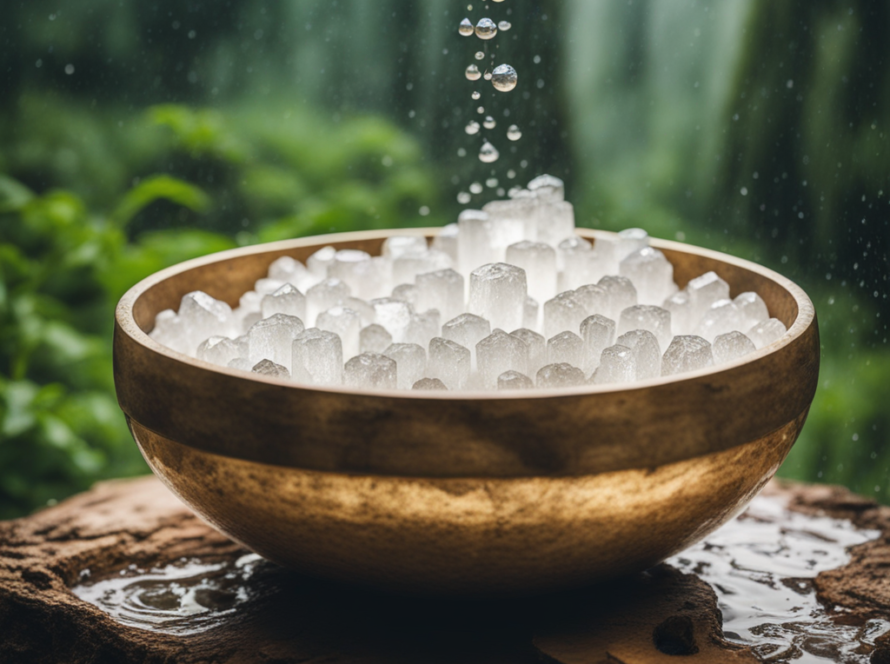This post contains affiliate links, through which we may earn a small commission at no extra cost to you. We only recommend products and services we personally use and trust!
In a world filled with artificial lights, digital screens, and constant noise, it’s easy to feel unrooted—adrift in the currents of daily life. We rush from one obligation to the next, barely pausing to breathe, let alone connect with the very thing that sustains us: the Earth beneath our feet. Yet, within the soil, the grass, the sand, and the water, lies an ancient remedy—one that has always been available, waiting for us to return. This remedy is Earthing, also known as grounding, a simple yet profound practice that invites us to reconnect with the Earth’s energy and, in doing so, restore balance within ourselves.
The Forgotten Connection: Why We Need Earthing
For most of human history, we lived in direct contact with the Earth. We walked barefoot, slept on natural ground, and relied on the land for nourishment and healing. But modern life has severed that connection. Insulated by shoes, pavement, and indoor living, we have become detached from the Earth’s natural electrical charge—a charge that has the power to soothe, heal, and recalibrate our bodies and minds.
Grounding is not just a metaphor for feeling centered; it is a biological process that directly impacts our health. The Earth carries a negative charge, rich in free electrons that act as nature’s antioxidants. When we make direct contact with the ground, these electrons help neutralize free radicals, reducing inflammation, stabilizing the nervous system, and promoting overall well-being.
The Healing Benefits of Grounding
1. Easing Stress and Anxiety
In an age of chronic stress, our nervous systems often remain in a constant state of fight-or-flight. Grounding has been shown to activate the parasympathetic nervous system, shifting the body into a state of rest and relaxation. The simple act of standing barefoot on the Earth can lower cortisol levels, helping to release tension, quiet the mind, and bring a sense of inner peace.
2. Reducing Inflammation and Pain
Many modern diseases—arthritis, autoimmune conditions, cardiovascular issues—stem from chronic inflammation. Studies suggest that grounding reduces inflammatory markers, allowing the body to heal more efficiently. For those experiencing chronic pain, grounding can serve as a natural pain reliever, easing discomfort and promoting faster recovery from injury.
3. Restoring Energy and Vitality
Ever notice how refreshed you feel after walking barefoot on the beach or lying on the grass? That’s not just a coincidence—it’s the body absorbing the Earth’s energy. Many people report increased vitality, mental clarity, and an overall sense of well-being after regular grounding practices. By restoring electrical balance in the body, earthing can enhance circulation, improve oxygen flow, and leave you feeling rejuvenated.
4. Supporting Sleep and Circadian Rhythms
With constant exposure to artificial lighting and electromagnetic fields, many people struggle with disrupted sleep patterns. Grounding has been shown to regulate melatonin production and reset the body’s internal clock. Those who incorporate grounding into their routine often experience deeper, more restorative sleep, waking up feeling refreshed rather than drained.
How to Incorporate Grounding into Your Daily Life
The beauty of grounding lies in its simplicity—no expensive equipment, no complex routines, just an invitation to step outside and connect. Here’s how you can make grounding a natural part of your life:
- Walk Barefoot: Spend at least 20–30 minutes a day with your feet directly on the Earth—grass, sand, soil, or even concrete (as long as it’s unsealed and conductive).
- Sit or Lie on the Ground: Whether meditating, reading, or simply resting, direct contact with the Earth allows for energy absorption and relaxation.
- Swim in Natural Bodies of Water: Oceans, lakes, and rivers provide an incredibly grounding experience, surrounding your body with nature’s healing energy.
- Garden with Bare Hands: Digging into the soil not only connects you with the Earth but also introduces beneficial microbes that support physical and emotional health.
- Use Grounding Tools: When outdoor grounding isn’t possible, Earthing mats and sheets can help bring the benefits of grounding indoors.
An Invitation to Return to Ourselves
Grounding is more than a wellness trend—it is a return to something instinctual, something our ancestors knew intuitively. In a world that often pulls us away from ourselves, the Earth is always there, steady and unwavering, ready to receive us.
When life feels chaotic, when stress takes hold, when exhaustion sets in—pause. Step outside. Feel the Earth beneath your feet. Breathe in the air, listen to the wind, and remember that you are part of something greater. The healing energy of the Earth is always available, waiting for you to return home.
It is important to note, while grounding can offer moments of relief and a sense of calm, it is not a cure-all. Conditions like chronic pain, fatigue, or anxiety often stem from deeper medical complexities that require comprehensive care. Grounding may serve as a supportive tool, but addressing the root cause is vital for long-term well-being.
If you are experiencing persistent symptoms, seeking guidance from a healthcare professional ensures you receive the appropriate care and support your body truly needs.
For more information on how grounding can support your well-being, visit Earthing.
The Earth has always been our greatest healer. We just need to listen.
References:
https://health.clevelandclinic.org/earthing
https://www.scirp.org/journal/paperinformation?paperid=82706
https://pubmed.ncbi.nlm.nih. gov/30448083/
https://pmc.ncbi.nlm.nih.gov/articles/PMC4590684/
https://pubmed.ncbi.nlm.nih.gov/25748085/https://pubmed.ncbi.nlm.nih.gov/30982019/


